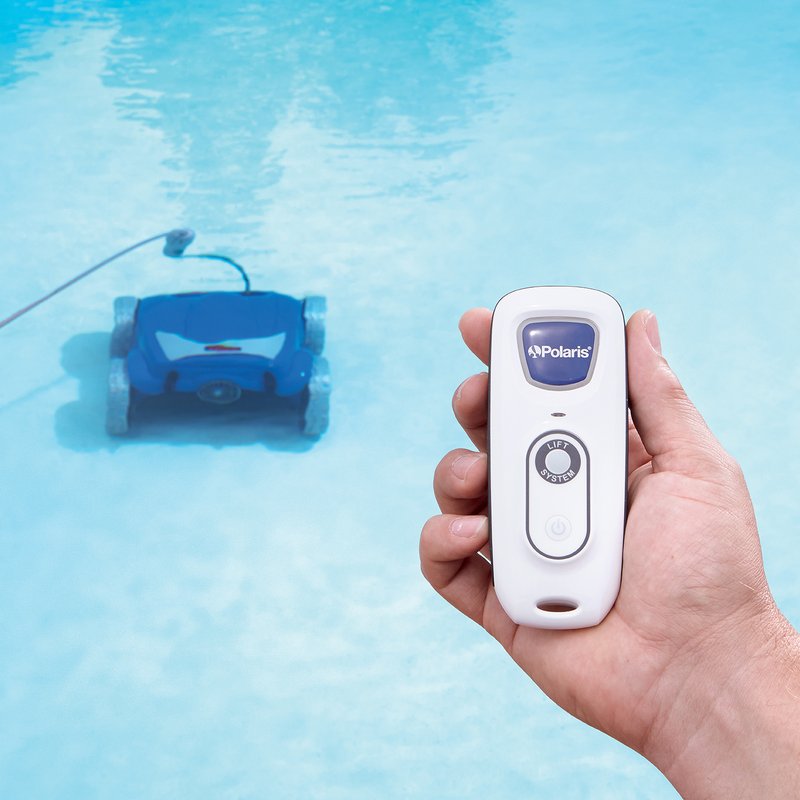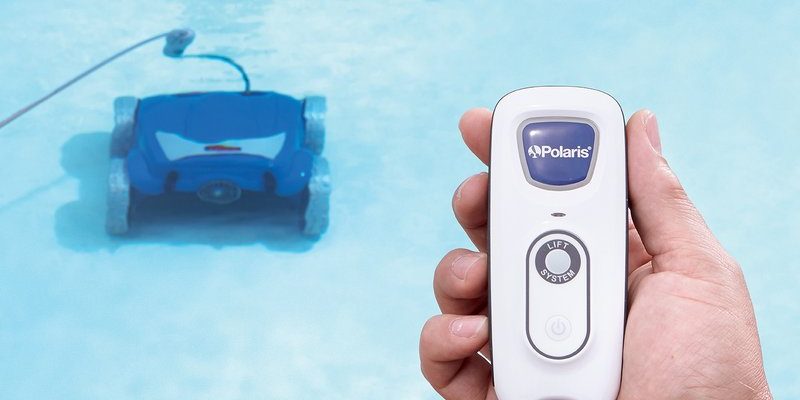
The Polaris pool remote isn’t quite like the standard clickers you’re used to, though. It’s made for complicated setups, like splitting your pool into several “zones” (think: main pool, spa, waterfall, or maybe that fancy LED lighting you can’t quite figure out). But here’s where things get tricky: Can one Polaris pool remote actually control everything, all at once, across multiple zones? Or are you destined to play musical chairs with remotes every time you want a dip or a light show?
Let’s break this down, remote in hand, and get to the bottom of how Polaris pool remotes interact with multiple pool zones, what’s possible, and where things might get sticky. If you’ve ever pressed a button, heard nothing, and wondered if your pool was ignoring you on purpose, you’re in the right place.
Understanding Polaris Pool Remotes: The Basics
So, what exactly is a Polaris pool remote? Polaris, a well-known brand in pool automation, offers several remote control models that let you manage pool features without getting up from your lounge chair. These remotes can handle everything from jets and pumps to lights and water features, all with a few clicks.
Most Polaris pool remotes use radio frequency (RF) or infrared (IR) signals to communicate with a central control box or panel—think of this as the “brain” of your pool system. The remote doesn’t talk directly to the pool equipment itself. Instead, it sends commands to the controller, which then switches things on or off, adjusts settings, or cycles through different modes.
Here’s the thing: Not all Polaris remotes are created equal. Some are basic and manage only simple on/off tasks. Others are more advanced, with screens and zone management options. The specific model you have will play a big role in what you can and can’t do in terms of controlling multiple zones. If you’re not sure which version you’re holding, check the back or inside the battery compartment for a model number.
What Are Pool “Zones” and Why Do They Matter?
You might be wondering, “What even counts as a pool zone?” That’s a great question. In pool-speak, a “zone” just means a separate area or feature that can be controlled independently from the rest. Examples include:
- Main pool area: The standard swimming space.
- Spa or hot tub: Usually with its own jets, heater, and temperature controls.
- Waterfalls or fountains: Decorative features that have their own pumps or lighting.
- Pool lighting zones: For splitting up different sections with separate colors or intensities.
Having zones is like having different rooms in a smart home—each with its own light switch and thermostat. The catch? Your remote needs to speak the language of each zone. It’s one thing to turn on the pool heater; it’s another to start a waterfall and dim the spa lights at the same time.
Why does zone control matter? Because if you have a multi-zone pool but only a single-zone remote, you’ll quickly find yourself limited. You want flexibility: start the spa while keeping the main pool off, or vice versa. The better your remote matches your zone needs, the less time you’ll spend running around the backyard (or, worse, calling your pool technician in frustration).
How Polaris Pool Remotes Communicate With Zones
Let’s dive a bit deeper into how the magic happens. Polaris pool remotes use wireless signals to talk to a central hub, which then sends instructions to each pool zone. But just because you have multiple zones doesn’t mean they’re all automatically linked to a single remote.
Here’s how it works in practice:
- Your remote sends a command (say, turn on the spa jets).
- The control hub receives the signal and checks which zone is being targeted.
- If your remote is programmed for that zone, it sends the instruction.
- If not, nothing happens—just crickets (and maybe some frustration).
The key detail? Your remote and controller must be paired, synced, or programmed for each specific zone you want to manage. This usually involves entering programming mode on your hub, pushing certain buttons on the remote, or inputting a code (like pairing Bluetooth headphones, but with more steps and sometimes less patience).
If you’re thinking, “Wait, do I need to code something?”—don’t worry. Most pairing is just pressing and holding buttons in sequence. But if you skip this step, your remote will only work with its default zone—sometimes the main pool, sometimes another area, depending on how your setup was installed.
The Reality: Can One Polaris Remote Run Multiple Zones?
Here’s the nitty-gritty: Many—though not all—Polaris pool remotes are designed to control multiple zones, but there are caveats.
If you have a newer Polaris system or an advanced remote (think: with a digital display or several labeled buttons), chances are good you can switch between zones right from the remote itself. For example, you might have dedicated buttons for “Pool,” “Spa,” “Lights,” and “Aux” features. In this case, one remote equals multiple zones—no sweat.
But here’s where it gets tricky: Basic Polaris remotes, especially older models, may only be programmed to operate one zone at a time. If you try to use a single-button remote to operate both the pool and the spa, you’ll run into brick walls. Sometimes, you’ll need to “un-pair” and re-sync the remote to the other zone, which is about as fun as resetting your Wi-Fi router every time you want to watch TV.
Honestly, it depends heavily on your specific remote model and how your pool’s control system was wired during installation.
If you aren’t sure, open up your control panel (or check your user manual) and look for info about zone programming, auxiliary control, or device pairing. That will tell you if you’re set up for one-remote-fits-all, or if you’ll need to upgrade for full flexibility.
Programming and Pairing: How to Set Up Your Remote for Multiple Zones
Setting up one Polaris remote to work across multiple zones isn’t usually rocket science, but you’ll want to follow a few important steps. The process can vary a bit depending on your specific model, but here’s the usual play-by-play:
- Check compatibility: Make sure your remote—and your control hub—support multi-zone operation. If your remote has zone or feature-specific buttons, you’re in luck.
- Access programming mode: Most Polaris control panels have a “program” switch or button. Sometimes it’s hidden under a small panel cover or marked with a gear icon.
- Pair your remote: With the panel in programming mode, click the remote button(s) for each zone you want to pair. You might hear beeps or see indicator lights flash as zones sync up.
- Test each zone: Exit programming mode and try operating each zone from the remote. If something doesn’t work, repeat the pairing steps or check for battery issues.
Don’t forget: If your remote acts up or loses connection, you might need to reset it. That usually means removing the battery for a few seconds, then re-inserting it (like doing a little CPR for electronics). Some remotes have a “reset” button inside the battery compartment.
Here’s the thing—if you get stuck, don’t sweat it. Polaris support or your pool installer can usually walk you through the process over the phone. Sometimes all it takes is a careful read of the manual and a bit of patience.
Common Problems and Troubleshooting Tips
No system is perfect, and Polaris pool remotes are no exception. Here are a few classic headaches folks run into (and how to fix them):
- Zone won’t respond: You press the button, but nothing happens. The most common culprit? The remote isn’t paired with the right zone—or the hub has lost sync. Try re-pairing, or check for interference (thick walls, metal pool housings, or too much distance can all block signals).
- Remote keeps disconnecting: This often points to a dying battery. Swap in a fresh one, making sure it’s seated properly. If that doesn’t help, try a reset and re-sync the remote.
- Can’t find pairing mode: Some hubs hide their pairing switch well. Look for small reset buttons, or consult your manual for a code or procedure (yes, the dreaded “hold for five seconds” dance).
- Multiple remotes, multiple headaches: If your household has more than one remote, make sure you’re not accidentally de-pairing zones when you sync another. Sometimes a universal approach can cause more confusion than clarity.
Let me explain—most “unresponsive remote” issues can be fixed by a simple battery change or a quick re-pair. Don’t jump to conclusions about expensive repairs until you’ve tried these tricks.
It’s also worth checking for firmware updates if your system supports them. A quick update can squash annoying bugs and improve zone recognition.
Universal Remotes vs. Brand-Specific Polaris Remotes
Here’s a question that pops up a lot: “Can I just get a universal remote instead of the Polaris brand?” Honestly, it depends on your comfort with tech and how much you value seamless integration.
Polaris remotes are tailor-made for their own systems. This makes setup, pairing codes, and troubleshooting much smoother. If you try a universal pool remote, you might run into compatibility snags—especially with advanced zone features or custom light settings.
- Pro of universal remotes: They can combine several devices (pool, spa, maybe even garden lights) into one unit. Handy if you have a Frankenstein’s monster of pool equipment from different brands.
- Con: You might lose access to specialized Polaris features—or need to enter complicated pairing codes. Plus, tech support may be less helpful when you mix-and-match brands.
In most cases, sticking with a Polaris pool remote for Polaris systems means less hassle with zone pairing, more consistent responses, and easier troubleshooting down the road.
When It’s Time to Upgrade Your Remote
There comes a point when wrestling your old remote just isn’t worth the effort. If you keep running into dead ends—like being unable to pair multiple zones, constant signal dropouts, or confusing code errors—it might be time to consider a replacement.
Signs it’s time to upgrade:
- Your remote only handles one zone and you need more flexibility.
- Your system supports more features than your remote can address (like new lighting zones, waterfall features, or spa controls).
- You’re replacing pool equipment and want everything to play nicely together.
Polaris regularly updates its product line, so newer remotes often come with extra buttons, built-in screens, and improved battery life. If you’re unsure what to buy, reach out to your pool service provider or check Polaris’ official compatibility charts.
Upgrading isn’t just about adding bells and whistles. A new remote can save you hours of hassle, especially if you’re tired of re-coding, syncing, and swapping batteries every other week.
Remember: new remotes usually need to be paired with your existing hub—sometimes it’s plug-and-play, sometimes you’ll follow a simple code or button sequence. It’s rarely as scary as it sounds.
Final Thoughts: One Remote, Many Zones—Yes, But Check Your Setup
Controlling multiple pool zones with just one Polaris pool remote is totally doable—*if* your equipment and remote are built for it. Most modern Polaris setups make it easy: you can jump between the pool, spa, lights, and special features without missing a beat, provided everything’s been properly paired. But older or basic models might limit you to one zone at a time, unless you upgrade or reprogram.
So, before you toss your remote in frustration or consider buying another, check your current model’s features and make sure it’s synced with every zone you want control over. Most fixes are as simple as pairing a new Bluetooth speaker—though sometimes it pays to ask for help or invest in an upgrade if your system’s feeling more vintage than cutting edge.
In the end, a well-paired Polaris pool remote can be the magic wand for your backyard oasis—just make sure you’ve set it up right, and you’ll be pool-party ready in no time.
